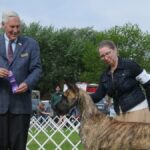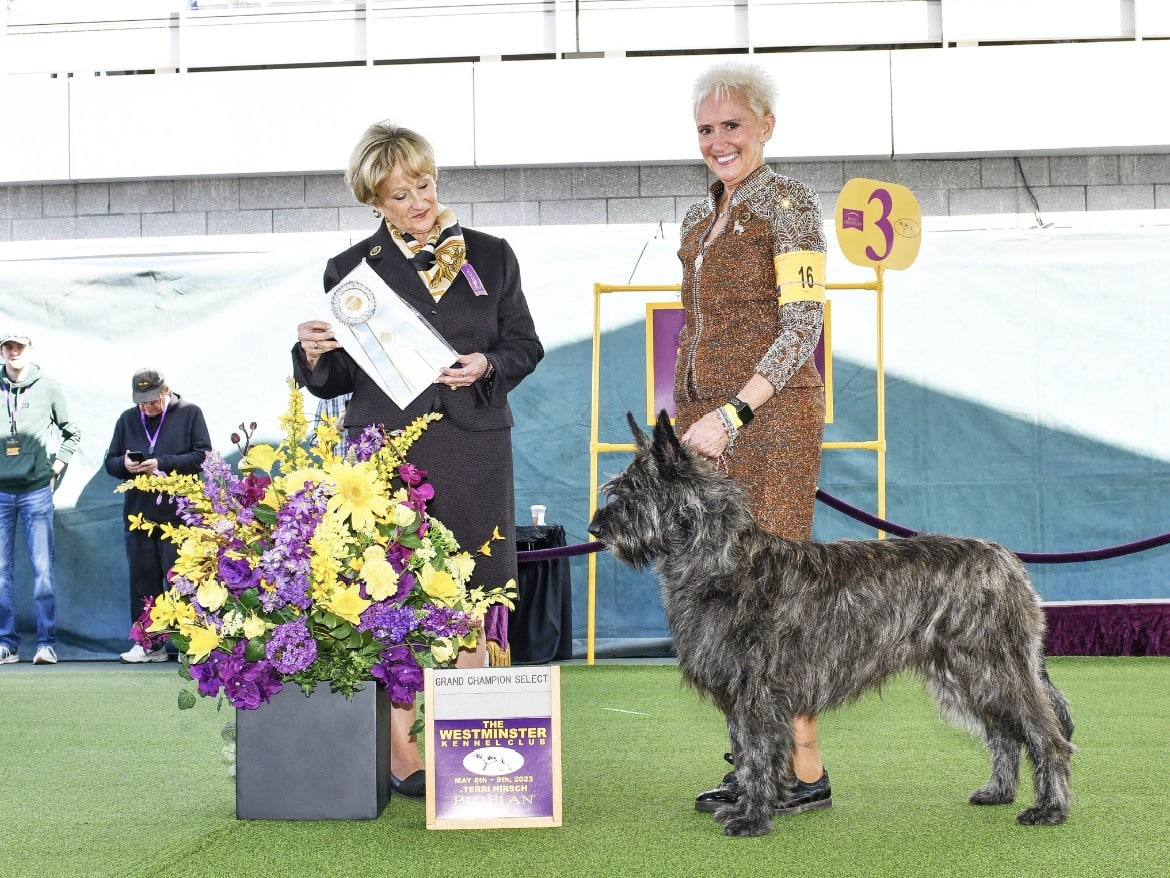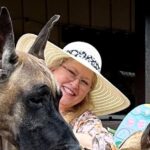Interview with Valerie Black, Breeder of La Vie en Rose Picards
Please tell us a little bit about yourself. Where do you live? What is your breed? What is your kennel name? Do you have a website? How long have you been in dogs? How long have you been breeding dogs? Who are some of your best-known dogs?
My name is Valerie Black and I have been involved in Berger Picards since 2005, as a founding member of the Berger Picard Club of America, and I continue to be an officer (immediate Past President/current Vice President and Judges Education Chair). I live in Wisconsin, and also serve as Secretary of Waukesha Kennel Club.
I am an AKC Breeder of Merit for my breed and have bred Picards since 2008, usually having one or two litters a year at most. I own three Picards and am proud to be a Breeder/Owner/Handler, having shown my GCH Genevieve de la Vie en Rose CGC to win the first BPCA National Specialty, then her daughter, GCHS Millicent de la Vie en Rose TT FCD BCAT, to Number One Bitch in the US in 2018 and Select at Westminster. I am now showing “Millie’s” daughter, GCH Sybille de la Vie en Rose DCAT, who was Select Bitch at Westminster 2023.
As a Breeder, can you share your thoughts on your breed today? Is breed type strong? Are there things to be concerned about? Are there any health-related issues? Have you worked with breeders overseas? Are pet homes typically available for your breed?
As a breeder, I remain concerned about preservation and, as a fairly new breed to this country, I remain passionate about both breeding to the FCI Standard and continuing to research possible health issues in my breed. I have been to the French Elevage (the Picard National breeding exposition) twice, having just returned from France from the 2023 event, which I believe not only helps my education but also helps me maintain my relationship with breeders from my breed’s country of origin.
I continue to strive to keep Berger Picards consistent with what the breed was intended to be; a rustic, strong, herding breed. It worries me when I see dogs in the show ring that appear overgroomed, scissored or sculpted with product in their coats, so much so that not a hair moves when they gait in the ring. The reason many of the founding members of our club pursued AKC recognition was to protect and preserve the breed, and I strive to promote this with exhibitors and judges constantly.
We in the US have added many health tests, as it is not totally clear which, or if any, significant health issues exist in the breed. We do have a DNA bank and have been fortunate to have had research directed at investigating PRA, which is the only true genetic issue known in our breed. I work with French breeders and consult with them fairly often, as they have the experience with this ancient breed that we do not have in the US.
As an Exhibitor, can you comment on recent entries in your breed? Are majors available in your area? Does your breed often participate in Companion and Performance events? How can newcomers in your breed be encouraged to join the sport of dogs?
I encourage all new owners to join the parent club (BPCA) and to try other events, too—whatever you can do with your dog is a good thing, and both owners and their dogs are happier when they do.
Both my parent club and my local club put on performance events, which are fun for all—both competitors and “pet” people.
What are the biggest challenges facing the dog show community as a whole and how can we address them? And finally, what are some of the positive changes you’ve seen in your breed and in the dog show community as a whole over the past decade?
I think a big challenge in encouraging new owners to show their dogs in Conformation is that it is intimidating to newcomers. Professional handlers make it look so easy, and I think sometimes newer exhibitors get discouraged when they don’t have success initially. Conformation classes, at times, can be hard to find in some areas; owners don’t know about them or how to get involved. Newcomers may not have success right away and, I think, sometimes they give up too quickly. However, as a breeder/owner-handler, I can tell you there is nothing better than having a judge reward me and compliment me on my breeding (even if my handling skills can—always—use more polish)!
I do believe this is where other events like Fast CAT help—no training! And who doesn’t like big ribbons?
Hopefully, with positive encouragement, helping new owners to get more involved with various dog activities and educating them, more people will enjoy exhibiting in the show ring.








